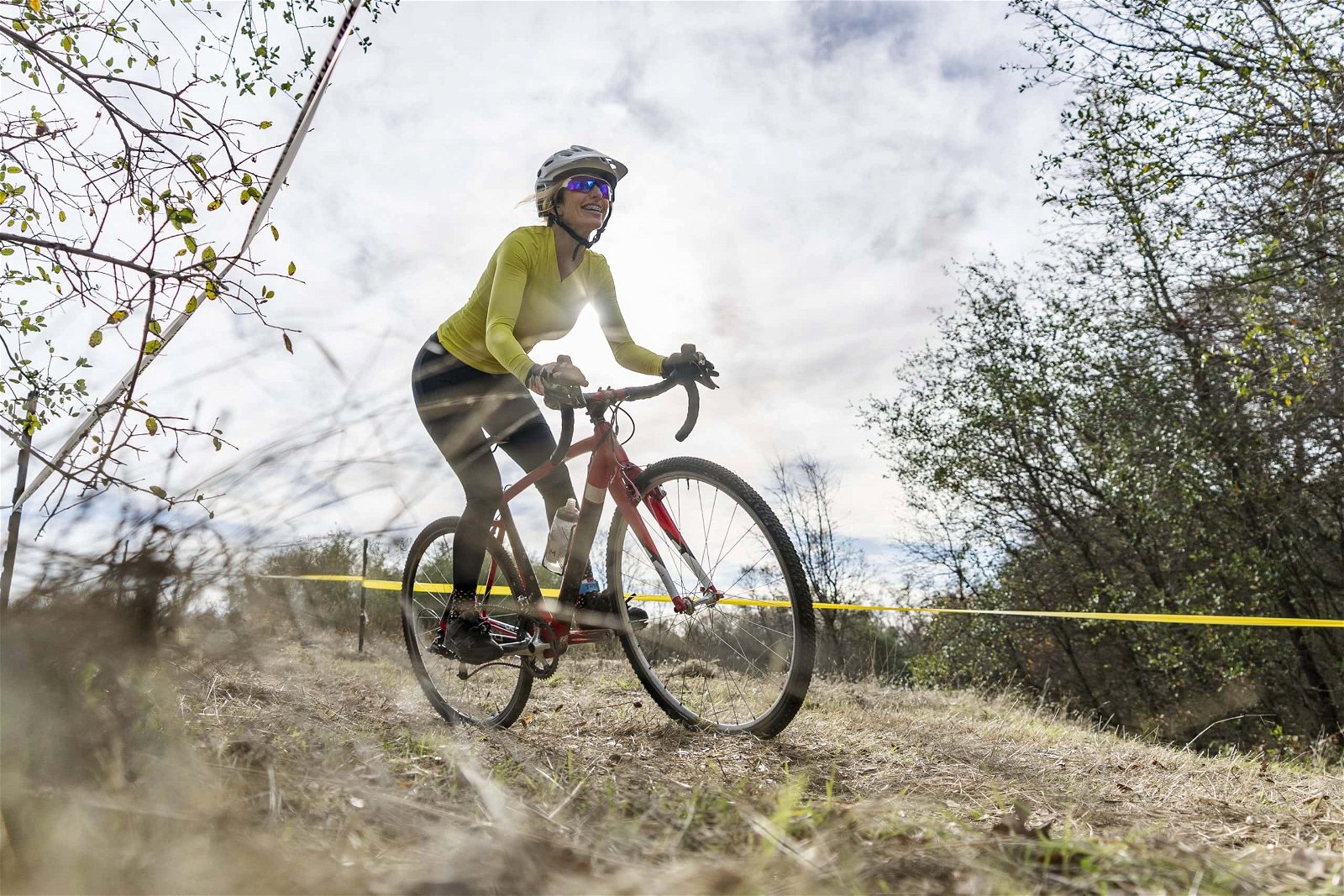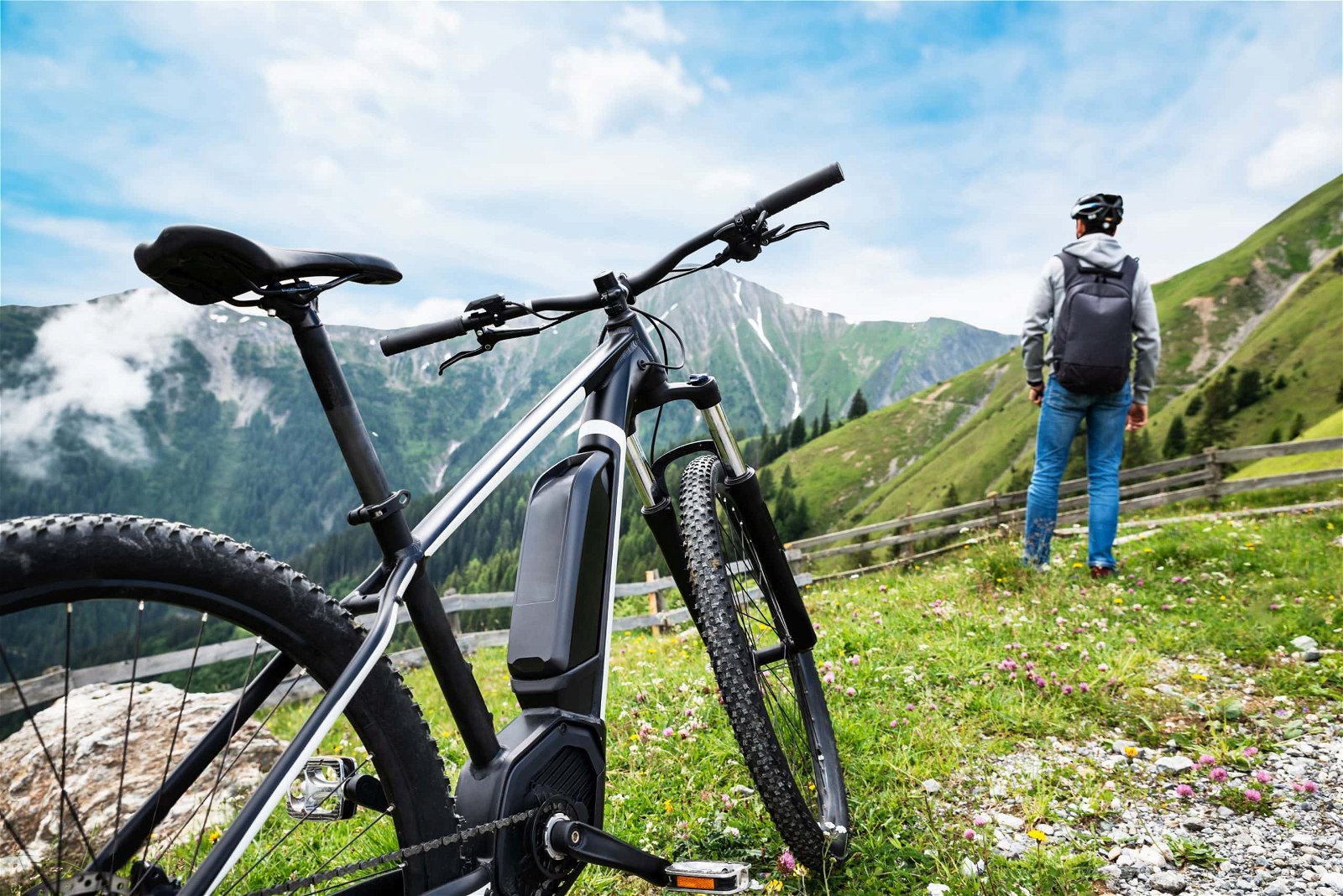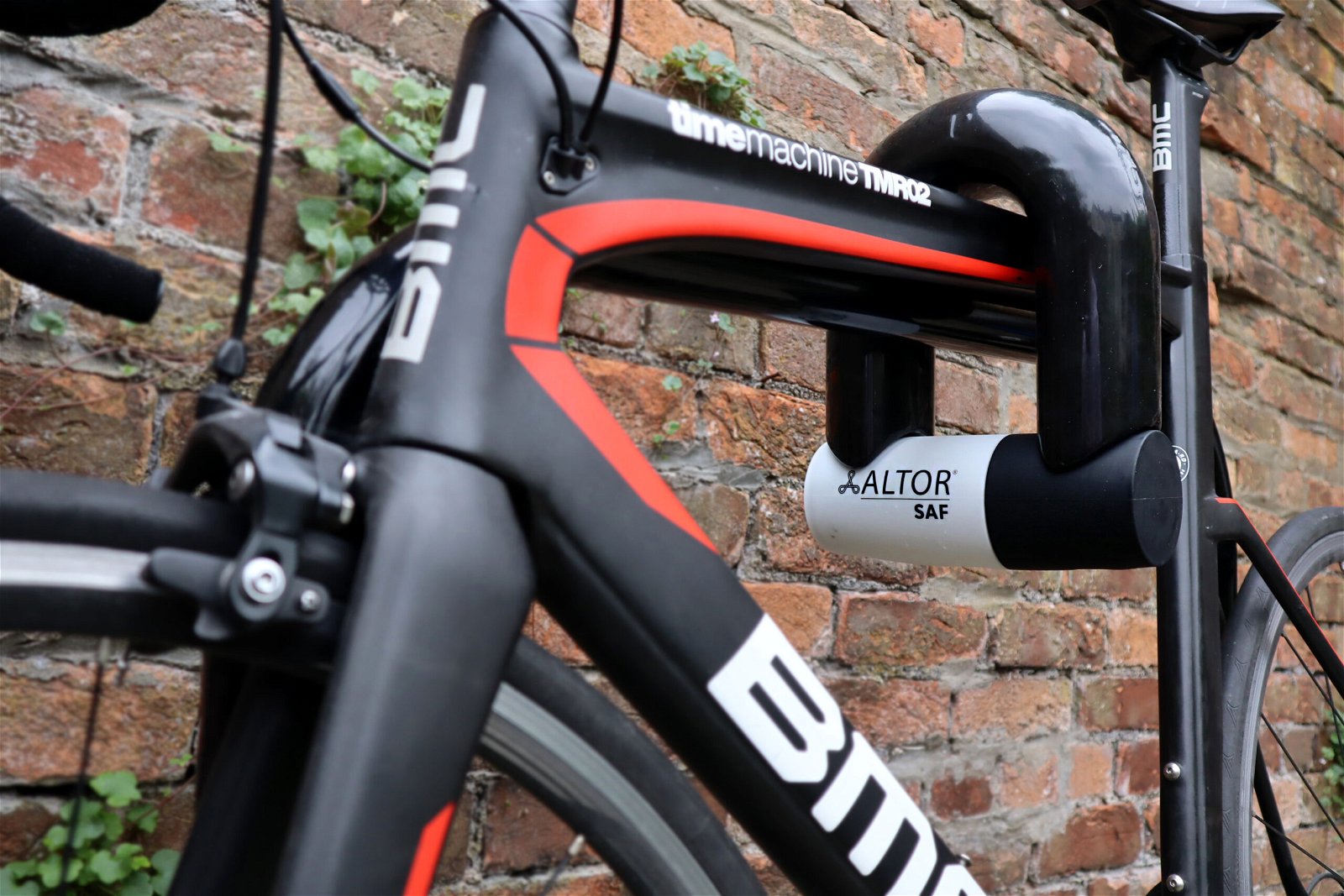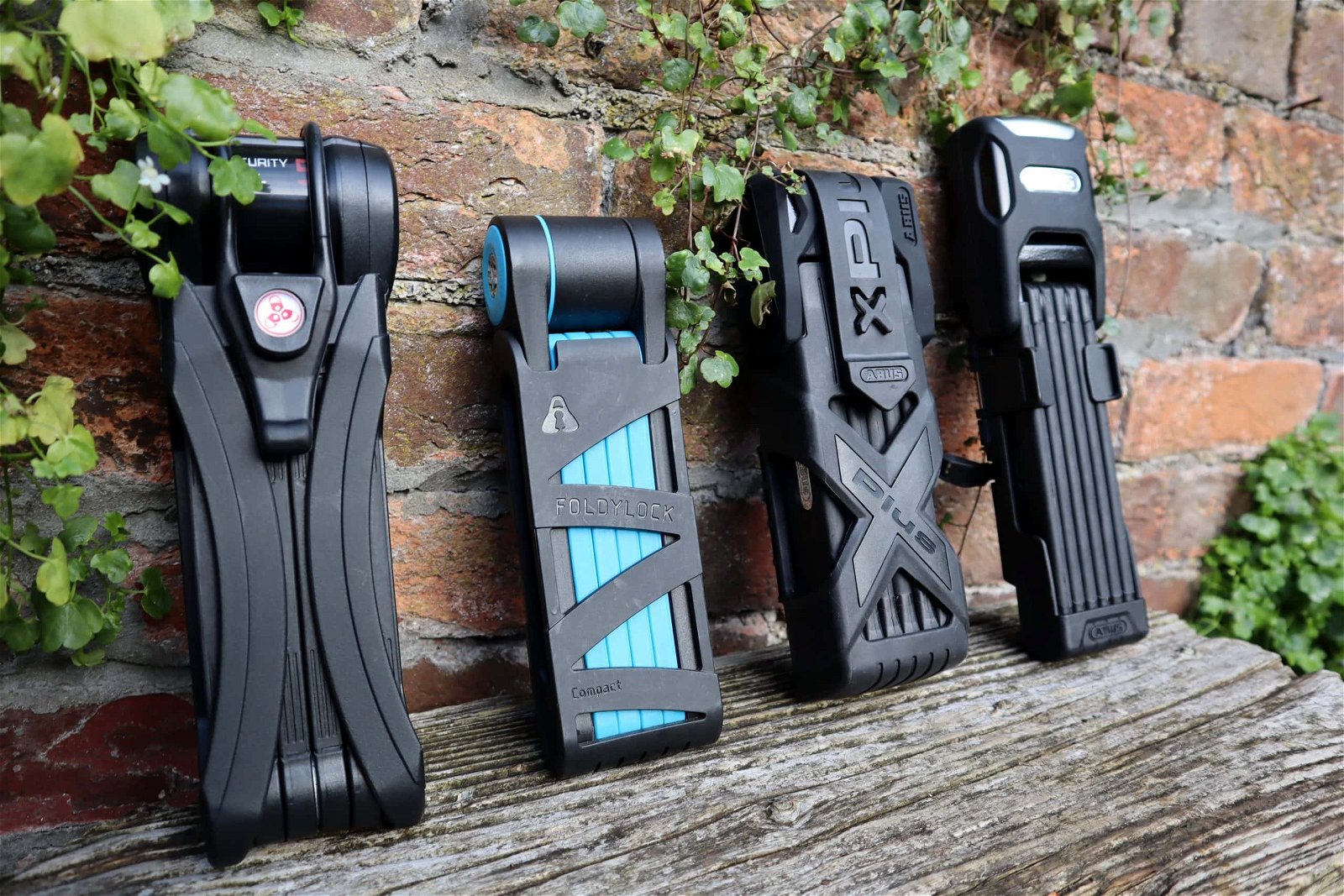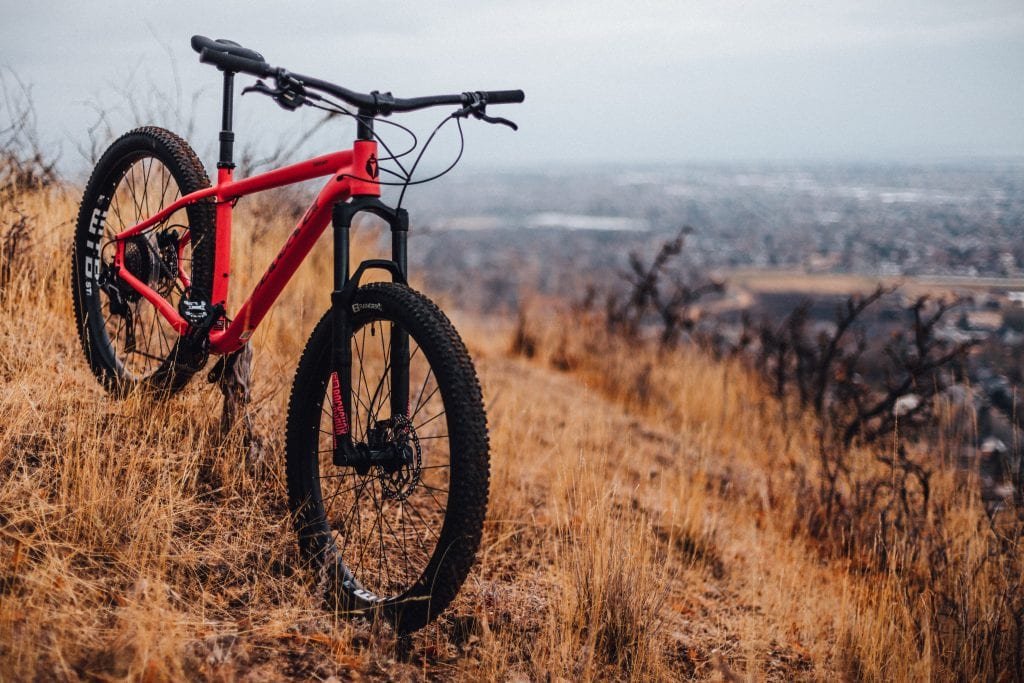
An Introduction to Hardtail Bikes
So you’ve clearly been wondering about hardtail bikes, and I don’t blame you. Hardtail bikes are awesome!
But what is a hardtail bike? What’s the difference between hardtail and full suspension? and what are hardtail bikes used for?
Fortunately, if you’ve been asking yourself any of these questions or similar, you’ve come to the right place.
Throughout this short guide, I’ll teach you everything there is to know about hardtail bikes as well as chucking in a few helpful tips on how you can get the most out of your time spent hardtailing!
Sit back, relax and get ready to become a hardtail expert.
Hardtail Bikes
If you’ve ever been a mountain biking before, there’s a good chance you’ve used a hardtail mountain bike.
Hardtail bikes, often referred to as hardtail mountain bikes are a bicycle designed to be ridden on a wide variety of off-road terrains.
As the name suggests, hardtail bikes have no rear shocks but will feature a front suspension fork.
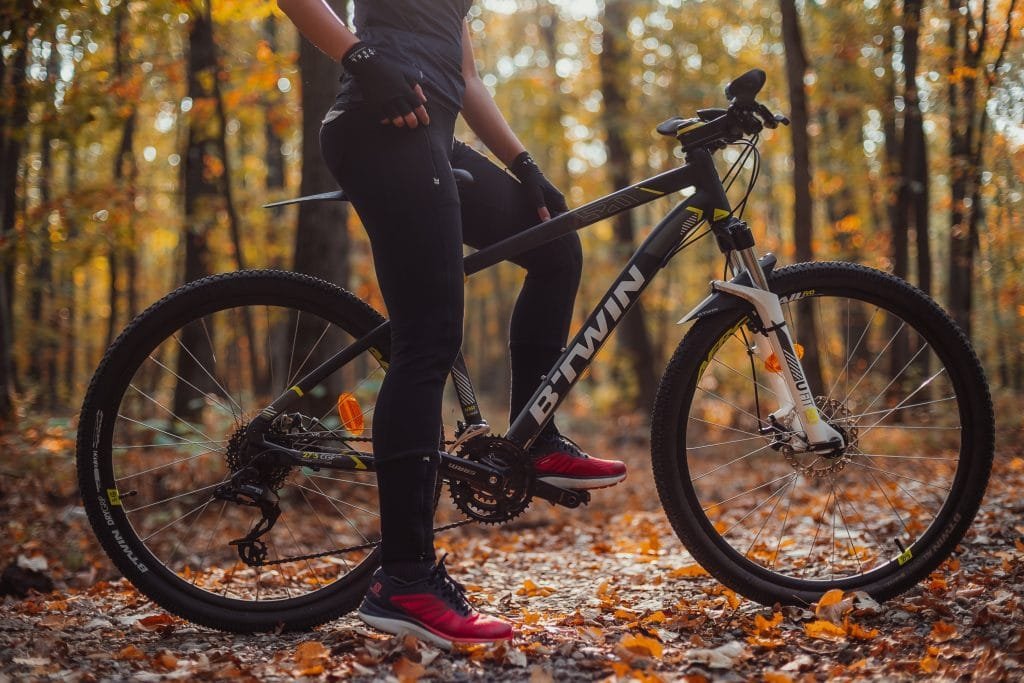
The front suspension of a hardtail bike will assist riders navigating difficult off-road terrain. When travelling over lumps, bumps and jumps the front suspension will absorb some of the impact, lessening the strain placed upon the rider.
Hardtails are characterized and known most for their all-purpose riding capabilities.
They’re also a more affordable, durable, and versatile option for cyclists who wish to take their cycling off-road, or break into the world of mountain biking.
What Are Hardtail Bikes Used For?
As a type of mountain bike, hardtail bikes are used for cycling on many terrains and environments. Their versatile and resilient nature means they’ll perform well in most places ride.
Suitable areas for hardtail mountain biking include mountain trails, fire roads and pump tracks.
However, hardtails are also suitable for less experienced riders and will shine on less intense trails, such as gravel and stone trails, woodland paths and even city streets!
If you’re interested in downhill biking or are primarily interested in hitting jumps and big air, you may want to consider a full-suspension mountain bike.

A full-suspension bike will absorb the majority of the impact from big ramps and jumps, leaving you to focus your concentration on the upcoming course.
Because they’re lightweight, hardtails will allow you to ascend hillsides with ease and can be found competing in the majority of mountain bike events, bar the most extreme.
Later in the article, I cover the competitions and events hardtail bikes are used to compete in.
Recap: What Is a Hardtail Bike?
Hardtail mountain bikes are one of the most versatile bikes on the market and allow cyclists to tackle a huge variety of terrains.
Hardtails bikes are predominantly designed for off-road cycling. Hardtail bikes don’t feature rear shocks, meaning their rear wheels are attached directly to the frame, hence the name”hardtail”.
The majority of hardtail bikes utilise a front suspension fork, whilst a minority use a completely rigid frame.
Hardtail bikes are avalible for riders of all capabilities. Some sell at very reasonable prices which makes them suitable for mountain biking begginers, whilst top-spec hardtails are avalible and are suitable for professionals riding in competitive events.
History of Hardtail Bikes
The origins of hardtail mountain bikes begin with the invention of mountain bikes.
In comparison to other bike models, purpose-built mountain bikes are not old in the slightest and have only recently made their mark on the biking world from the 1970s until today.
Before complete bikes were purpose-built for the mountains, a select group had the courage to race the mountain hills on nothing more than balloon tyred beach cruisers with gears and coaster breaks.
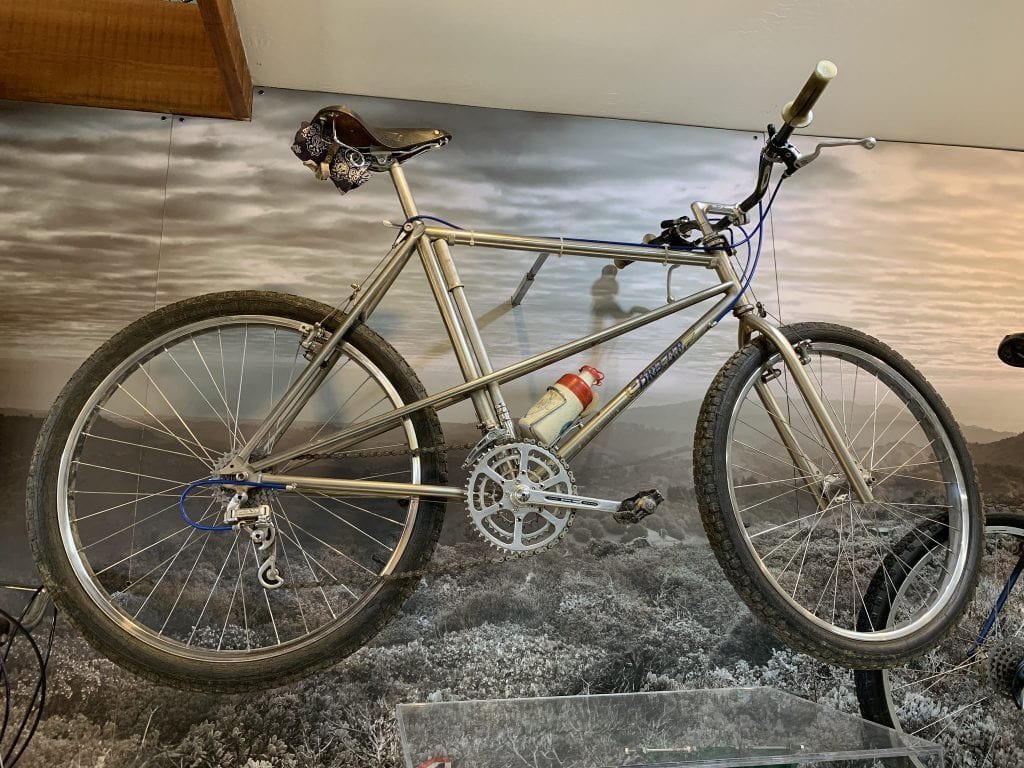
These races were famously named “Repack downhill races”, due to the amount of abuse the coaster breaks received on the way down the hillside, requiring them to be repacked with grease at the end of the race!
The designer of the first purpose-built mountain bike which later inspired updated models like the hardtail was Joe Breeze in 1977[2].
Joe and his friends attempted to race a variety of bikes downhill without much success. After testing multiple bikes, tyres, and frames, Joe was inspired to invent a sturdier bike that could cope with the battering of downhill riding, a bike that this friend coined a “mountain bike.”
When Were Hardtail Mountain Bikes Invented?

Since their creation in 1977, hundreds of different manufacturers have jumped on the mountain bike bandwagon. This has helped to make the mountain bike one of the most popular bike types within cycling.
Since the days of Klunker bikes, the range of mountain bikes available has greatly expanded, offering more sub-types for the ever-expanding range of cycling disciplines.
In the 1990s bicycle pioneer, Doug Bradburry produced the first front suspension fork. Surprisingly this was over 100 years after the release of the Whippet, one of the earliest bicycles to feature spring-powered rear suspension.
In the 1990s and 2000s, mountain biking became less of a niche sport and much more widespread. partially because of the addition of mountain biking in the summer Olympic games.
Ultimately after Doug Bradburry’s invention of the front suspension fork, the hardtail mountain bike was born.
Who Should Use a Hardtail Bike?
The beauty of hardtails is that they are suitable for beginner mountain cyclists and advanced riders alike. Riders of all ages and fitness levels can enjoy riding these trustworthy, off-road inclined bikes.
One of the aspects that makes them great, specifically for beginners, is that they force cyclists to pay attention to their body positioning, balance, and trail choices more than full-suspension bikes.
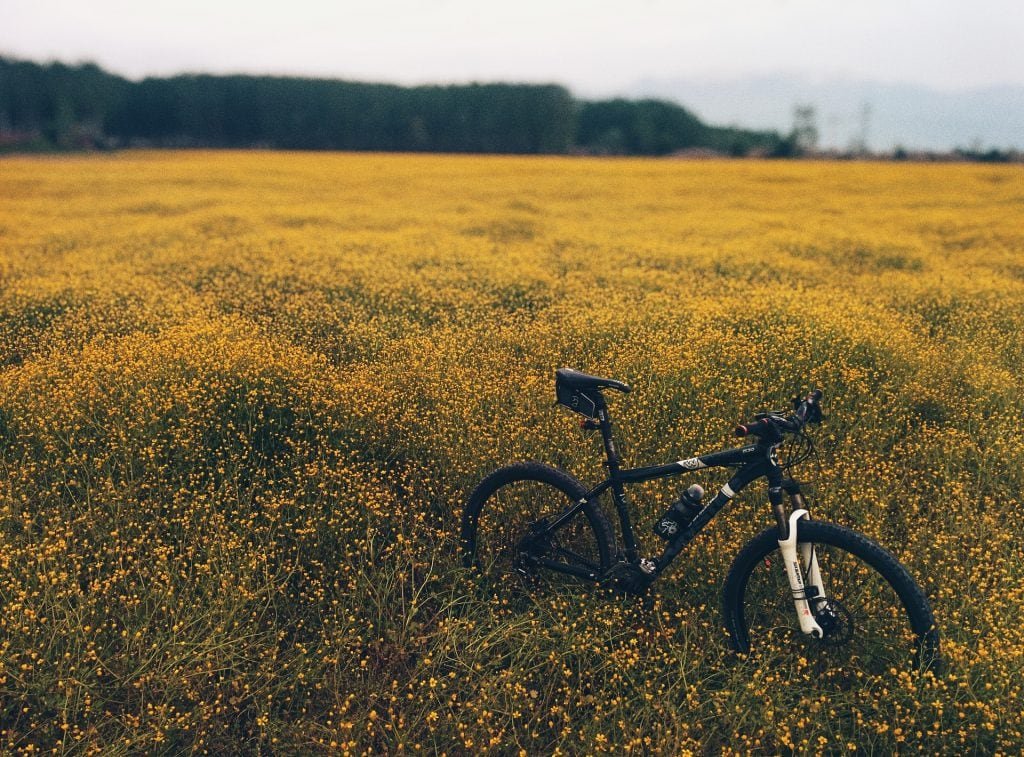
This is because the lack of rear suspensions means riders withstand more impact themselves rather than the suspension system taking the brunt of the force for them.
If you commute to work by bike, but also enjoy tearing up the trails during your time off, a hardtail will be a good choice. Make sure to read about the benefits of a hardtail mtb vs a full-suspension mtb later in the guide!
Who Shouldn't Use A Hardtail Bike?
Riders who are seeking the most intense of terrain conditions should probably avoid hardtails.
Although heavier and more expensive, full-suspension mountain bikes take the cake for navigating dips, drops, and rocky obstacles.
The added assistance of a rear suspension helps you focus more on keeping your balance and the obstacles ahead, rather than the bumps you are experiencing.
Another group of riders that should avoid hardtails are cyclists who stick to paved roads and cycle paths. A gravel bike is probably a more suitable choice for those who spend the majority of their cycling life on flatter, roads and trails.
How Does a Hardtail Compare to Other Bikes?
Hardtail MTB VS Full-Suspension MTB
Hardtail bikes don’t utilise rear shocks and instead only make use of a front suspension fork.
As their name suggests, full-suspension bikes use rear shocks and a suspension front fork (full-suspension system).
Full-suspension systems provide a number of benefits for riders, but also increase the average cost of a bike, making them a more expensive choice.
| Hardtail MTB |
|---|
|
|
|
|
|
|
| Full Suspension MTB |
|---|
|
|
|
|
|
|
Conclusion - Hardtail VS Full-Suspension
To summarise Hardtail vs Full-Suspension, it’s best that cyclist consider which terrains and courses they’ll be riding most. If you want to ride extreme downhill trails and trails with complex obstacles a full-suspension bike is probably more suitable.
If you’re a beginner to mountain biking and want to take things slow and steady, a hardtail mountain bike might be more suitable. They’re cheaper and you’ll receive better components for your money.
Hardtail mountain bikes get their name from their lack of rear shocks, giving them a hard tail. Rigid framed bikes, often referred to as hybrids, have a completely rigid frame and don’t use and form of suspension.
Both of these models can be bought for a similar price, with hardtails being more suitable for off-road pursuits and hybrids a more suitable commuting option!
Below I’ve summarised the main differences between these two bike types:
- Hardtail bikes are more suitable for intense off-road trails and will cope better with jumps and difficult terrain
- Hybrids provide faster acceleration
- Hardtails cost slightly more to maintain because the suspension front fork requires servicing, whereas a hybrid’s doesn’t
- Rigid frame bikes travel faster over flat gravel trails and fire roads
- Hardtails are more versatile and provide increased support on a number of challenging terrains
Hardtail bikes make use of a front suspension fork, whilst gravel bikes have a fully rigid frame with no suspension.
This makes these bikes suitable for different cycling disciplines.
Hardtails are capable of tackling more extreme trails with complex obstacles such as ramps, rock gardens and steep hills.Their suspension front fork provides comfort for the rider, but also increased control as it encourages the front wheel to stay in contact with the ground.
Gravel bikes are built for tackling flatter trails and paved surfaces at high speeds. Whilst these bikes can tolerate jumps, rock gardens and muddy areas, their lack of suspension makes them much less comfortable to ride across difficult terrain.
Gravel bikes are more suitable for commuting, but if you wanted to hit the pump tracks and trails on the weekend, a hardtail bike would be a great choice!
As they’re a newer concept, entry-level gravel bikes will normally cost more than entry-level hardtail bikes.
Ultimately, the deciding factor between these two bikes will come down to which cycling disciplines you wish to practice the most.
What Competitions/Events are Hardtail Bikes Used In?
Hardtails are a type of mountain bike used in the mountain biking discipline of cross-country or XC.
In this competition, riders are challenged primarily on their endurance with technical skill and abilities playing a big part also. These races involve cycling on a variety of types of terrain, with some of the more gruelling races even spanning multiple days!
Cross-country cycling is the only Olympic level mountain biking event, which began in the 1996 Atlanta summer Olympics[4]. Since it’s the only event involving mountain bikes, it is the only Olympic space that hardtail bikes are used in, whilst some other XC riders opt for full suspension bikes.
The UCI host the yearly XC MTB world championships and world cup, which has been a popular event for a long time now.

Benefits of Hardtail Bikes
Hardtail bikes offer many advantages over other types of bike.
Their cheaper price point makes hardtail bikes an excellent option for people who want to try out the sport of mountain biking without shelling out the big bucks quite yet.
You can easily pick up a high-quality hardtail for a fraction of the price of a high-quality full-suspension mountain bike.
Plus, as a beginner, you won’t be tackling expert trails where full-suspension systems are required.
Use your hardtail for as long as you like, or until you feel like it’s restricting your abilities whilst riding.
Not only are hardtails cheaper than most other bikes types on the market, but they’re also extremely versatile.
This reduces the need for cyclists to purchase multiple bikes for every type of terrain that they want to ride on, since most trails can be tackled with a hardtail bike, from beginner to advanced levels.
Pauline Prevot recently finished first place at the 2020 UCI Women’s Elite XCO. Her bike of choice was a hardtail, and she was competing against number of riders using full-suspension bikes, which proves how capable hardtails are! (watch video below)
Risks Associated with Hardtail Bikes
Although hardtails are great bikes that can withstand a decent level of intensity, they are risks associated with riding them in environments that aren’t smooth and paved.
This means it’s crucial to exercise caution when navigating rougher terrains, by only choosing paths suitable for riders of your experience and always wearing proper protective gear; helmet, glasses and gloves.
As with any cycling discipline, when starting out as a beginner it’s important to learn the basics before attempting more challenging trails & tricks.
Types of Hardtail Mountain Bike
There are many different types of hardtail bike available, each type caters for a different cycling discipline.
I’ve briefly described the types of bike, their components and what their suitable for below, so take a look.
Have a watch of the videos for a more in-depth look into each cycling discipline!
XC (Cross-Country) Hardtail Bikes
As I covered earlier cross country mountain biking is the only MTB event to be featured in the Olympics.
Cross-country mountain biking is where the sport began. XC courses are fairly short, but competitors must climb, traverse and descend through tightly packed forests, gravel paths, grass fields and muddy trails.
To cope with these varying terrains riders require a high gear ratio, 75-100mm front suspension forks and a steeper headtube angle that allows them to stretch out into a more comfortable riding position.
Some riders will also use dropper seatposts, which allow the rider to change the height of their saddle throughout the race using a lever attached to their handlebars.

Trail Hardtail Bikes
Trail hardtails are extremely versatile. These bikes have a well-rounded relaxed frame geometry which provides a comfortable ride.
The front suspension of a hardtail trail bike will normally measure between 100-150mm which gives riders enough to take on jumps and downhill sections, whilst not sapping too much energy when riding uphill.
Normally you’ll find a wide gear range on a trail bike, along with wide handlebars which provide accurate steering for the sharp twists and turns you’d find whilst riding trails.
Trail bikes can handle most disciplines of mountain biking, making them a good option for beginners who don’t know what style of MTB they require.

Electric Hardtail Bikes
Electric hardtail mountain bikes are becoming more popular, thanks to the increased interest and demand for electric bikes as a whole.
Electric hardtail bikes are normally only pedal assist, with fewer providing throttle. The components of these bikes can range widely and will depend upon which discipline a rider wants to pursue.
It’s been shown that e bikes will allow you to ride further and for longer periods of time, making an electric hardtail MTB suitable for any MTB enthusiast!
Enduro Hardtail Bikes
Enduro racing links back to the early days of MTB and is an event where riders are competing on their descent times. Starting from the top of the course riders descend, cutting through forest trails with ramps, roots and plenty of tight technical corners!
Due to the extreme nature of enduro racing, the bikes used for this cycling discipline are similar to downhill mountain bikes.
Many riders opt for full-suspension bikes, whilst some others go hardtail for their decreased weight.
Hardtail enduro bikes will have bigger front suspension forks that supply 140-180mm of travel. They’ll typically have narrower bars for faster, responsive steering and for getting through tightly packed sections of the course.

Jump Bikes
Jump bikes aren’t your normal hardtail bike, they’re not quite mountain bikes, but they’re not quite BMX’s, in fact, they sit somewhere in between the two.
These bikes are made for hitting big ramps and performing tricks both in the air and on the ground
Riders use front suspension forks with 100-150mm of travel to provide relief from the impact of big jumps, whilst not being too heavy.
I’ve covered more about jump bikes here, if you’re interested have a read!
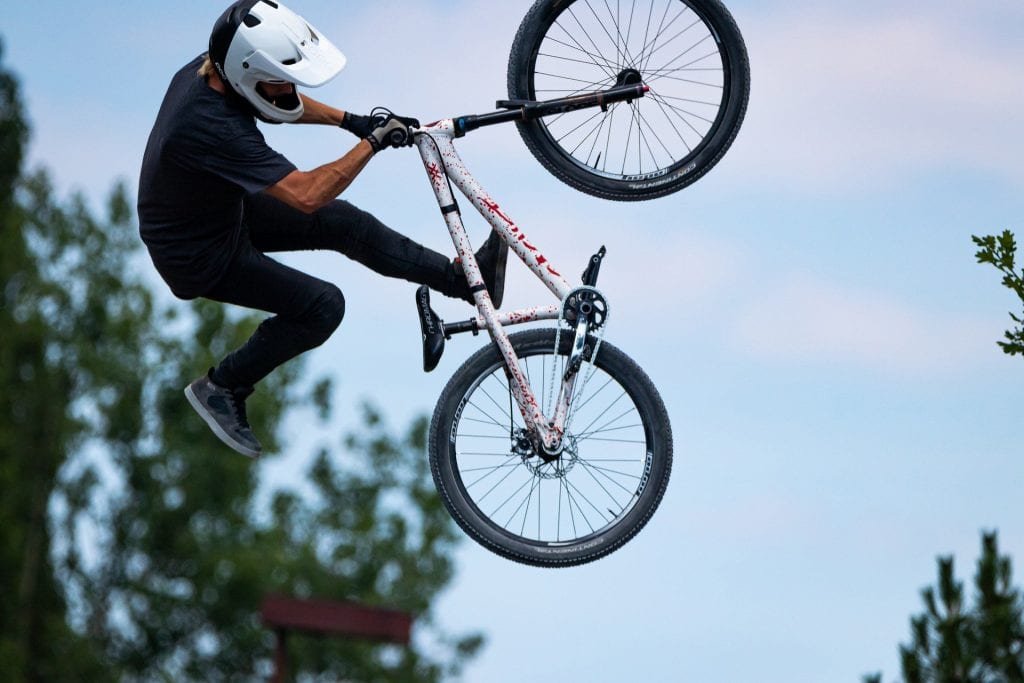
Components of a Hardtail Mountain Bike
As with the majority of bike frames, you have a choice of four materials to choose from when it comes to hardtail mountain bikes. Steel, aluminium, carbon fibre and titanium are the most common materials.
Steel framed mountain bikes are less common now than they were originally. This is due to the fact that aluminium frames provide a better stiffness to weight ratio and are also much cheaper for manufacturers to produce.
Carbon fibre and titanium are more premium choices and are normally more expensive. Many mountain bike riders steer clear (pun intended) of carbon frames as they are brittle and prone to expensive damage.
The frame geometry of hardtail bikes depends upon which discipline you’re looking to follow, to find out about the differences in frame geometry, read about the different MTB disciplines above.
As you now know, hardtail bikes have a suspension front fork, these provide assistance with difficult sections of trails and relive impact after big jumps.
Your average hardtail mountain bike uses a front fork with 100-140mm of travel, however, some bikes such as enduro hardtails can feature bigger forks with up to 180mm of travel.
On lower-end hardtail bikes, you can expect to find forks with less travel.
More expensive forks will feature a lockout lever, which as previously explained will allow you to keep your suspension rigid. This lockout feature is extremely beneficial for steep hill climbs or riding flat, paved surfaces.
Hardtail mountain bike wheels vary in size, with each size offering a mixture of benefits to their users.
26″ wheels are the original size for all mountain bike wheels.
29″ mountain bike wheels arrived on scene shortly after the millennium. These are the same size as most road bike wheels and provide a faster top speed and greater control when tackling larger obstacles. 29″ wheels tend to be suitable for taller riders as they’ll increase the overall height of your bike.
27.5″ wheels came shortly after their larger counterparts and offer faster acceleration, more responsive steering, but less traction and aren’t as capable of tackling larger obstacles.
Since the release of these two wheels sizes, 26″ wheels have taken a back seat, with 27.5″ and 29″ wheels becoming the standard options for new mountain bikes.
To find out more about the pros and cons of wheel sizes, I’ve included a table below, have a read and see which riding style suits you best.
The best way to decide between the two wheel sizes, is to try them out for yourself.
Tyres are always a talking point when it comes to mountain biking, and especially so with hardtail bikes.
As there are no rear shocks on a hardtail bike, the rear wheel absorbs the impact from lumps, jumps and bumps meaning it’s more prone to punctures.
To avoid rear-wheel punctures on a hardtail, riders can use tubeless wheels. Tubeless wheels use an inner sealant that prevents punctures and keeps you moving.
Riding tubeless also means that you’re able to ride with your tyres at lower pressure without risk of pinch puncture. Lower tyre pressure also provides increased control and more cushioning from impacts, which is especially helpful on a hardtail.
Changing your tyres to suit the terrain you’re riding will dramatically alter the capabilities of your bike. For example, when riding on a dry, dusty trail, slicker tyres will allow you to ride faster, whilst providing enough grip on the dry ground.
Similarly, if you’re riding through muddy forest trails with slippery obstacles, a tyre with more tread will work well. You’ll have increased control and traction in wet areas, but will slightly loose out on speed on flatter sections.
Traditionally, all mountain bikes used rim breaks. These are now only found on lower-end bikes.
Hardtails costing £500 ($700) or less will normally feature rim breaks. Whilst rim breaks provide a decent way to slow down, they’re not hugely effective in wet environments, something that will limit your capabilities when hitting the trails.
More upmarket hardtail bikes will come with disc breaks. These are a relatively new addition to the cycling world and provide better responsiveness across the board.
Two different types of disc breaks are available, mechanical and hydraulic.
Mechanical disc breaks are the cheaper option and they’re much more reliable than rim breaks. Disc breaks also demand less maintenance in the long run, saving you time and money on repairs.
Hydraulic disc breaks are found on more upmarket hardtail bikes and work in a similar way to automotive breaks. Hydraulic breaks provide the best modulation, which can increase rider confidence and performance.
The groupset of any bike are the components that make up its drivechain (chain, crank, chain ring, cassette, derailleurs, shifters and the bottom bracket).
With hardtail mountain bikes you can expect to find a mixture of parts from different groups, this allows brands to tailor their bikes for specific disciplines and pursuits.
One of the biggest changes we’ve seen with mountain bikes in the last few years is a transition towards cranksets with a single chainring. Commonly referred to as a “1x” (one times) a single chainring setup removes the need for a front derailleur and the corresponding shifter.
Removing these components decreases the weight of bikes and makes them easier to operate, especially for beginners.
Also, since mountain bikes don’t usually require large gear ranges, 1x setups have become increasingly popular across all types of MTB.
27.5" VS 29" Mountain Bike Wheels Comparison
If you’ve been struggling with what size wheels you’ll need for your hardtail mountain bike, check the table below for some helpful guidance.
It’s also important to consider the specific disciplines you wish to pursue as wheel size will alter the capabilities of your bike.
| 27.5" Wheels | 29" Wheels (29ers) | |
|---|---|---|
| Traction | Good | Increased |
| Acceleration | Faster | Slower |
| Top Speed | Slower | Faster |
| Weight | Lighter | Heavier |
| Suitable for | Less difficult trails | Trails with large obstacles |
| Other comments | More suited to shorter cyclists | More suited to taller cyclists |
The Environmental Impact of Using a Hardtail Bike
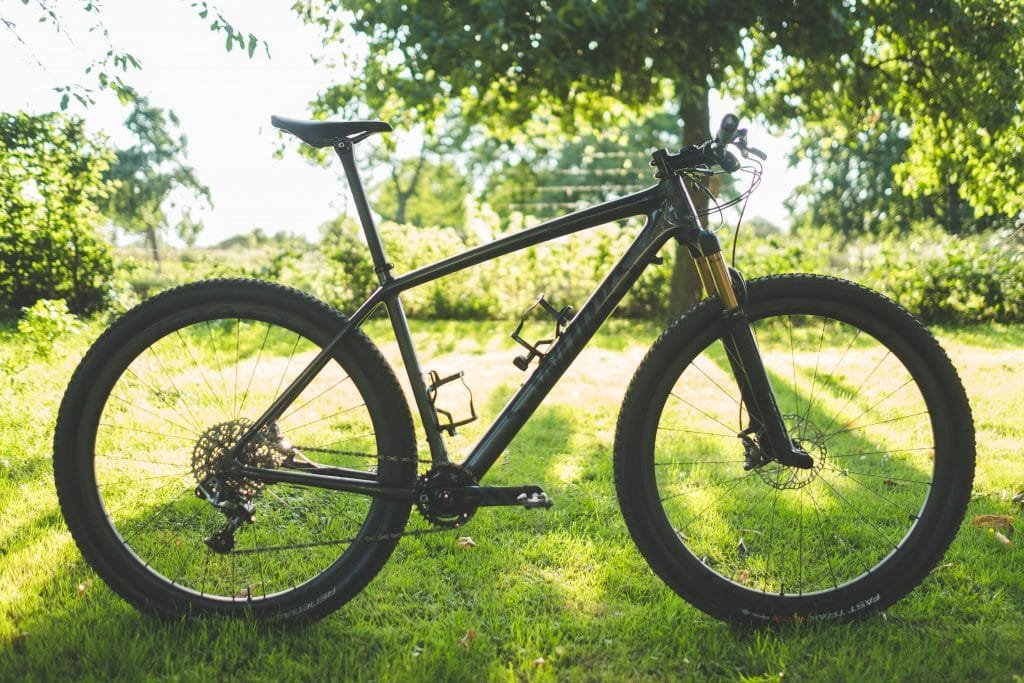
As with every sort of pedal-powered bicycle, hardtail bikes are a far greener option than driving a fossil fuel-powered vehicle.
The more people that choose to ride a bike over driving, the less we rely on fossil fuels and the less smog and pollution we produce. Providing a greener planet to the future generations.
If possible when riding try to stick to the trails and paths you’re riding rather than cutting corners or attempting to create your own paths. This will encourage nature to do its thing and will help local wildlife to thrive.
Do Hardtail Mountain Bikes Require Anything to Keep Functioning?
Without using complex parts, less time and money needs to be allocated to repairing or purchasing replacement parts for your hardtail bike.
Regular maintenance such as ensuring the tyres are inflated to the desired psi, oiling the chain and testing the brakes is essential and will make sure your hardtail continues to perform as it should.
If you ever suspect something is wrong with your bike, it’s best to get it checked out by a professional. Your local bike shop will happily help you.
Does a Hardtail Bike Require a Special Area to be Ridden?
Overall, the durable framework of hardtail bikes allows them to venture across most terrains, but as mentioned earlier, smoother trails are the optimum terrain for hardtails.
Some hardtails feature a front fork that has a lockout. This means that the travel of the front fork can be halted, transforming your hardtail into a rigid bike, similar to a hybrid.
This lockout feature is helpful when riding on flat surfaces, or especially when climbing hills on your hardtail as it prevents the suspension from sapping your energy. Another great feature for commuters who want to ride their hardtail to work on public roads.
What to Wear When Riding a Hardtail Bike
If you are planning on taking your hardtail bike on an adventurous mountain biking ride, then protective gear and durable clothing is always a must, even for advanced riders.
Hardtail mountain bikers should always make sure to wear a helmet, with some opting for a full-face helmet.
Other accessories you can take advantage of when riding your hardtail MTB are protective sunglasses or goggles, knee pads for added safety, mountain bike shorts and jerseys, cycling gloves, and a variety of waterproof jacket and trouser options.
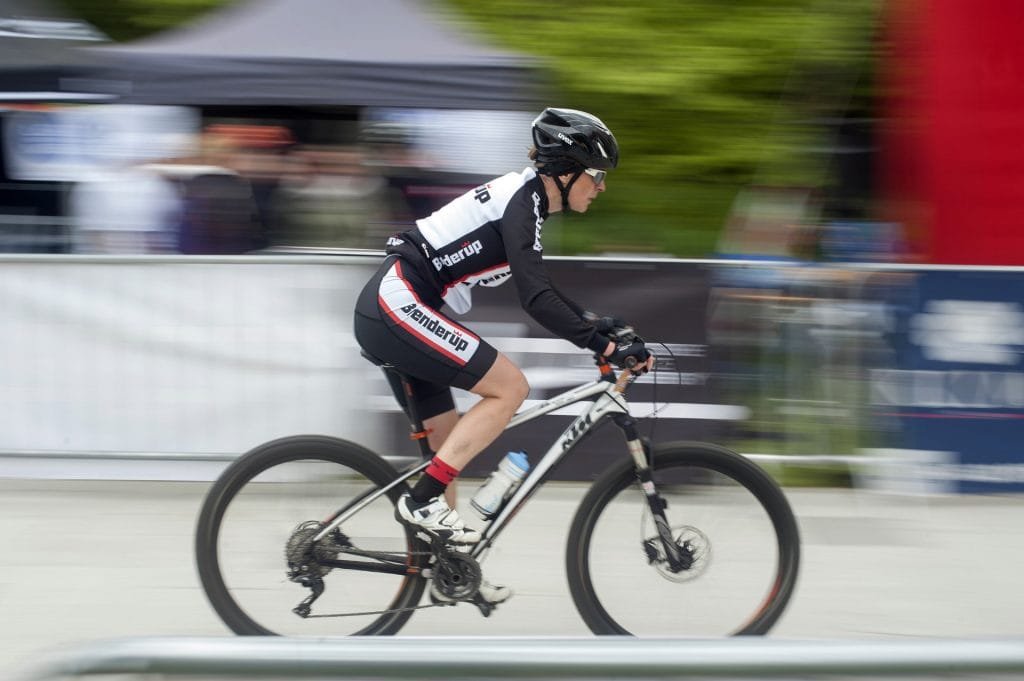
What Accessories are Recommended When Using a Hardtail Bike?
To stay safe on paths and terrains that are dark, lights and headlamps are often used with hardtail bikes. This is especially the case when exploring natural trails and forests without street lights that have obstacles that need to be visible.
Furthermore, if you’re embarking on a long ride with your hardtail, it is always a good idea to bring sufficient water and a backpack with essentials for staying hydrated and fueled on your adventure, especially if there is a risk of getting lost.
To avoid getting lost on longer forest trails, a cycling GPS might come in handy!
Conclusion - What Is a Hardtail Bike?
So there you have it! I hope you’ve found this complete guide to hardtail bikes helpful.
I spent a lot of time putting this content together with the hope of answering all of your hardtail-related questions.
If however, you still have unanswered questions regarding hardtail bikes, don’t be afraid to leave a comment below and I’ll get back to you!
When purchasing a new bike of any type it’s important to remember that you need to use a good quality lock to secure it. If you’re on a tighter budget, check out my review of the best cheap bike locks.
Otherwise, as always, lock it or lose it!
Ciao for now
[1] credit – Timothy Vollmer (Flickr) – License: https://creativecommons.org/licenses/by/2.0/legalcode
[2] https://www.breezerbikes.com/
[3] credit – Science Mueseum (Wiki) – License: https://creativecommons.org/licenses/by-sa/3.0/legalcode
[4] http://classiccycleus.com/home/repair/museum-bikes-1980-to-present/

